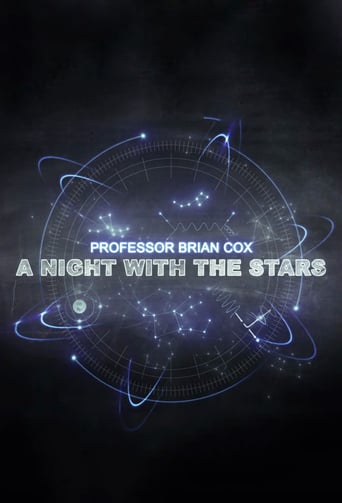



This is How Movies Should Be Made
Story: It's very simple but honestly that is fine.
This is a small, humorous movie in some ways, but it has a huge heart. What a nice experience.
View MoreA film of deceptively outspoken contemporary relevance, this is cinema at its most alert, alarming and alive.
View MoreThe adorable Brian Cox attempts to explain quantum physics to a roomful of assorted people at the Royal Institution, presumably many of the people "stars" in the celebrity sense.Brian gets audience participation in some experiments, such as a recreation of the double-slit experiment, igniting hydrogen, producing standing waves in a spring, and performing math.As a sort of ad for following up on some of the concepts presented, maybe it works. I'm not sure. But I don't think it's much use for learning. Brian's previous work is better for that goal. These topics take time. The fun in science isn't about flames and games; it's about how interesting our world really is.I am already familiar (as a viewer of science programs, not as a student or expert) with many of these ideas, and yet I remained unconvinced by the presentation. For example, the double-slit experiment was a disappointment. After hyping it, all that really happened was some sand went through two slits into two piles. We saw an overhead view of a water wave version of the double-slit experiment (but it crucially omitted the detector's view). Then we were shown a recording of the electron experiment instead of actually doing it as was suggested would happen. I don't think the audience even knew what they were supposed to be convinced of, after that.One key question that I am left with is how the Pauli exclusion principle means that no two elections anywhere in the universe can be in exactly the same quantum state, and that modifying the state of some electrons here means that electrons all throughout the universe must instantaneously adapt to this new change, to avoid being in exactly the same state. For example, heating the atoms in the £1000000 diamond immediately affects those in a white dwarf star (BPM 37093, I think). Does this happen at the speed of light? Is it faster than light (instantaneous, as suggested)? These questions were not discussed.I do appreciate Brian's statements to the effect that things like the Heisenberg Uncertainty Principle and the overall weirdness of quantum physics don't mean physics is impossible, or made-up nonsense, or license for all manner of "woo woo". Some audiences need to be reminded of this more often.One part I did benefit from was the reasoning that while it was almost certain that the diamond would never spontaneously move from its box, by focusing only on a few of the atoms and shrinking the box ever smaller (disregarding what it's made of) the math leads to a conclusion that not only makes this relocation more likely on the small scale, but inevitable.This lecture is not a bad way to spend your time. But it may not be useful. There is more in-depth information out there, from Brian Cox, and others.
View More